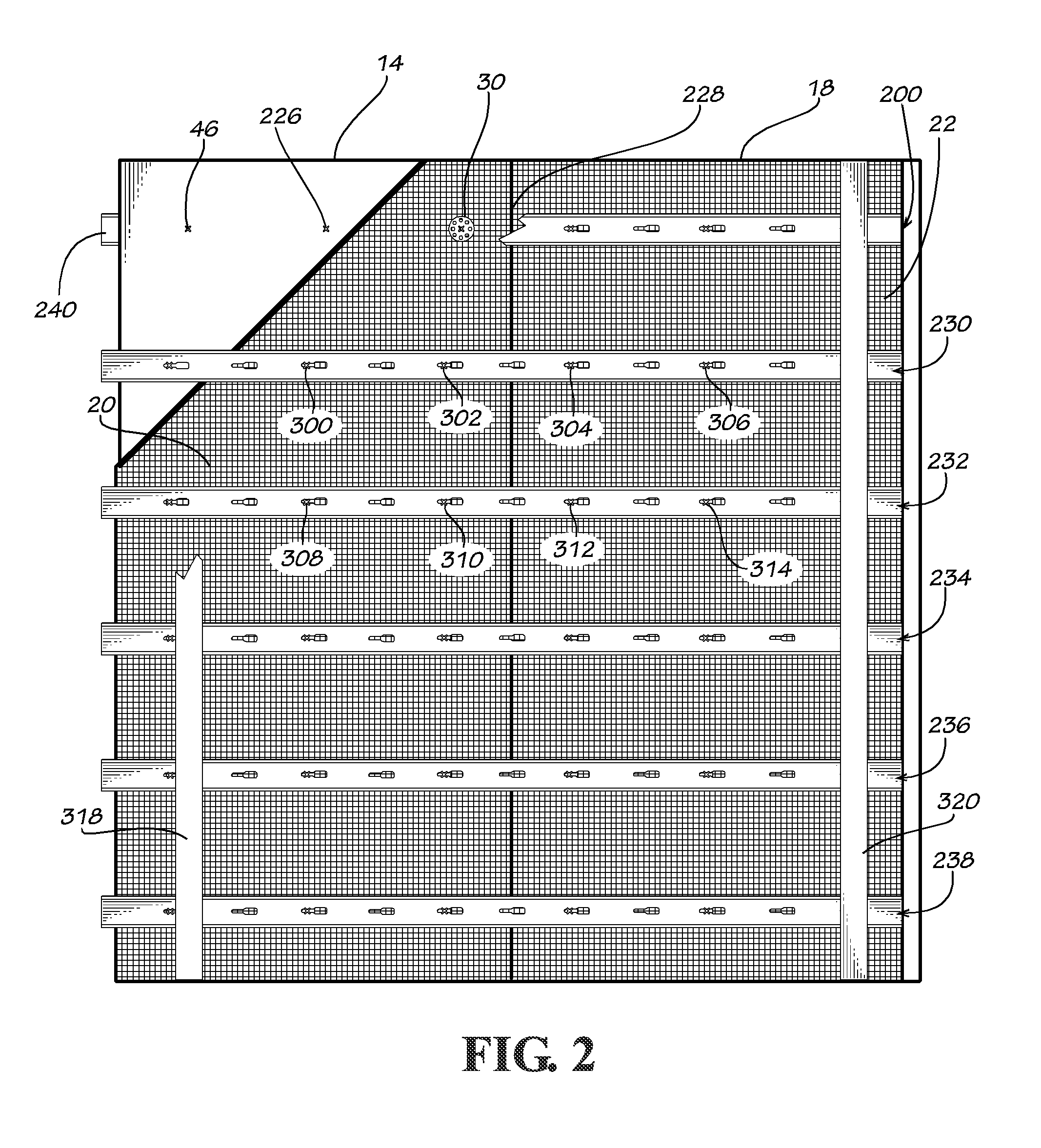Insulated concrete form and method of using same
a concrete and form technology, applied in the field of insulated concrete forms, can solve the problems of concrete buildings with relatively poor energy efficiency, concrete structures typically overdesigned, and the ultimate strength cannot be achieved, and achieve the effect of improving the curing environment and easy and inexpensive attachmen
- Summary
- Abstract
- Description
- Claims
- Application Information
AI Technical Summary
Benefits of technology
Problems solved by technology
Method used
Image
Examples
Embodiment Construction
[0101]Referring now to the drawing in which like numbers indicate like elements throughout the several views, there is shown in FIG. 1 a disclosed embodiment of an insulated concrete form 10 in accordance with the present invention. The insulated concrete form 10 includes a first exterior foam insulating panel 12 generally parallel to and spaced apart from a first interior foam insulating panel 14. Adjacent the first exterior foam insulating panel 12 is a second exterior foam insulating panel 16; adjacent the first interior foam insulating panel 14 is a second interior foam insulating panel 18. The foam insulating panels 12-18 can be made from any insulating material that is sufficiently rigid to withstand the pressures of the concrete placed in the form. The foam insulating panels 12-18 are preferably made from a polymeric foam material, such as molded expanded polystyrene or extruded expanded polystyrene. Other polymeric foams can also be used including, but nor limited to, polyis...
PUM
| Property | Measurement | Unit |
|---|---|---|
| density | aaaaa | aaaaa |
| density | aaaaa | aaaaa |
| diameters | aaaaa | aaaaa |
Abstract
Description
Claims
Application Information
 Login to View More
Login to View More - R&D
- Intellectual Property
- Life Sciences
- Materials
- Tech Scout
- Unparalleled Data Quality
- Higher Quality Content
- 60% Fewer Hallucinations
Browse by: Latest US Patents, China's latest patents, Technical Efficacy Thesaurus, Application Domain, Technology Topic, Popular Technical Reports.
© 2025 PatSnap. All rights reserved.Legal|Privacy policy|Modern Slavery Act Transparency Statement|Sitemap|About US| Contact US: help@patsnap.com



